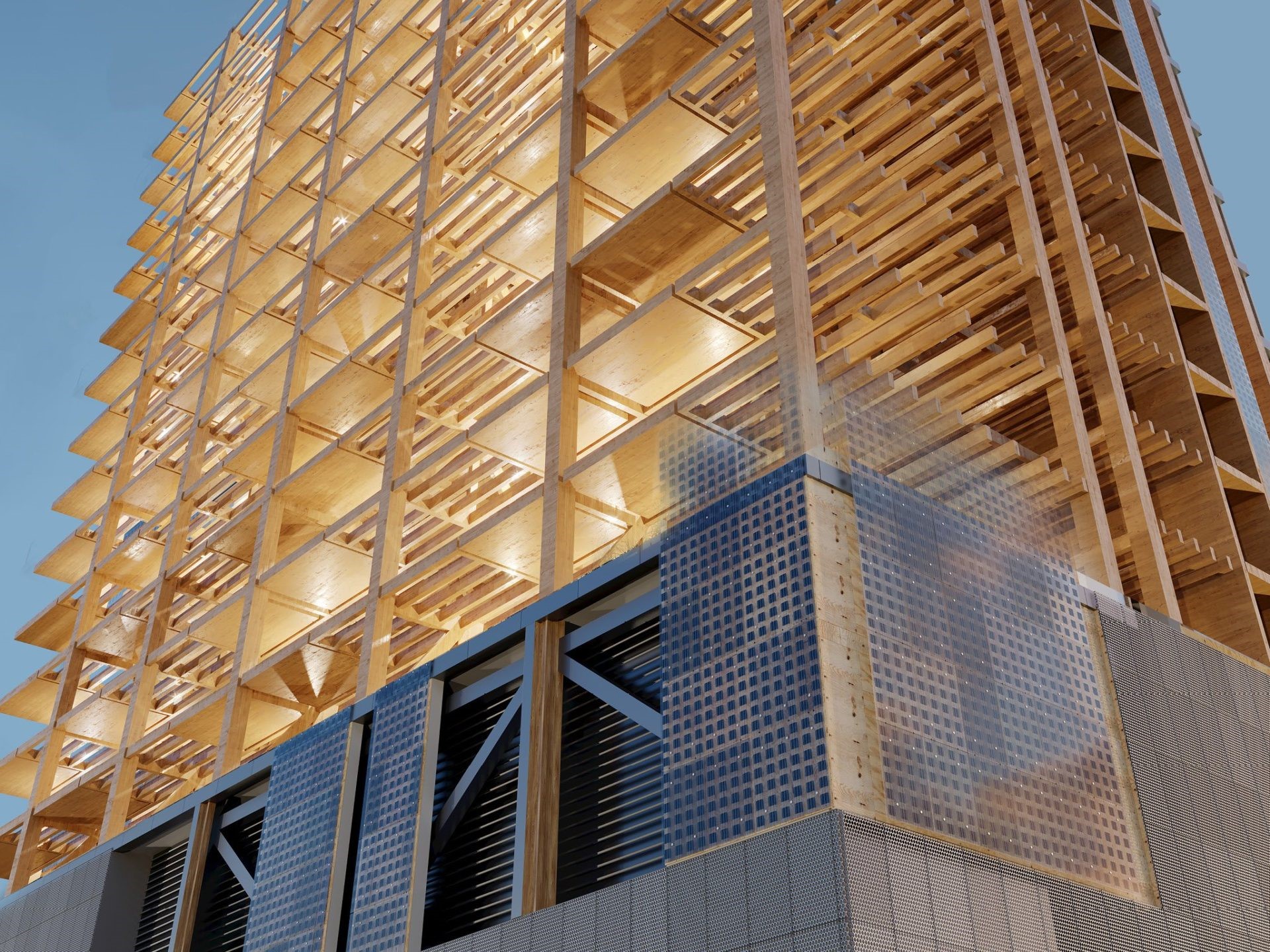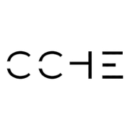8 July 2024

Construction started in 2022 and is scheduled for completion in 2025. Source: CCHE.
It is the first wood structure tower in French-speaking Switzerland with an active photovoltaic facade.
The Malley Viaduct district is labelled Site 2000 watts and the new Malley Phare extension will meet the Minergie-Eco label and comply with the requirements of the SIA 2040 standard. The project is being executed by Perspectives Construction, in consortium with JPF Ducret.
Malley Phare, an architectural symbol with a height of 60 meters, is an exemplary object from an energy and socio-cultural point of view. The use of wood from almost exclusively indigenous sources allows us to meet several challenges: application of the principles of the 2000 Watts society, increased energy performance, sustainable development, reduction of the duration of the construction site, lightness of the structure.
The new building is composed of 14 floors divided by 3 typical floors. This organization creates a facade design composed of slots, notches and loggias. Several common spaces are available to the inhabitants: “joker” rooms as well as coworking and home office premises (double height) that encourage teleworking as well a meeting a growing and current need.
One of the most striking features of Malley Phare is its commitment to sustainability, epitomized by the extensive photovoltaic installation on its facades. This installation is not just an add-on but a core component of the building’s design and energy strategy.
Here’s an in-depth look at the photovoltaic system and its benefits:
Integration with architecture: the photovoltaic modules are seamlessly integrated into the building’s facades, blending functionality with aesthetic appeal. This design ensures that the PV installation does not detract from the building’s sleek and modern look but rather enhances it.
Energy efficiency: the photovoltaic installation is designed to capture maximum sunlight, converting it into renewable energy. This contributes significantly to the building’s overall energy efficiency, reducing reliance on non-renewable energy sources and lowering carbon emissions.
Sustainable urban living: by incorporating renewable energy sources, Malley Phare promotes sustainable urban living. The electricity generated by the PV modules can power various building operations, from lighting and heating to powering common areas, thus reducing the overall environmental footprint.
Innovative technology: the PV installation employs the latest in solar technology, ensuring high efficiency and durability.
Economic benefits: the use of solar energy reduces operational costs by decreasing the building’s energy bills. Additionally, the project can benefit from various incentives and subsidies available for renewable energy projects, making it an economically viable solution in the long term.
Environmental impact: the environmental benefits are substantial, as the use of photovoltaic modules significantly cuts down on greenhouse gas emissions. Malley Phare serves as a model for sustainable construction, demonstrating how urban buildings can contribute to climate change mitigation.
Malley Phare is more than just a high-rise building; it is a beacon of sustainable development in Lausanne. The innovative use of photovoltaic modules integrated on its facades sets a precedent for future urban projects, highlighting the potential of integrating renewable energy solutions into modern architecture. As cities worldwide grapple with the challenges of climate change and urbanization, Malley Phare stands out as an exemplary project that harmonizes technological advancement with environmental stewardship.


